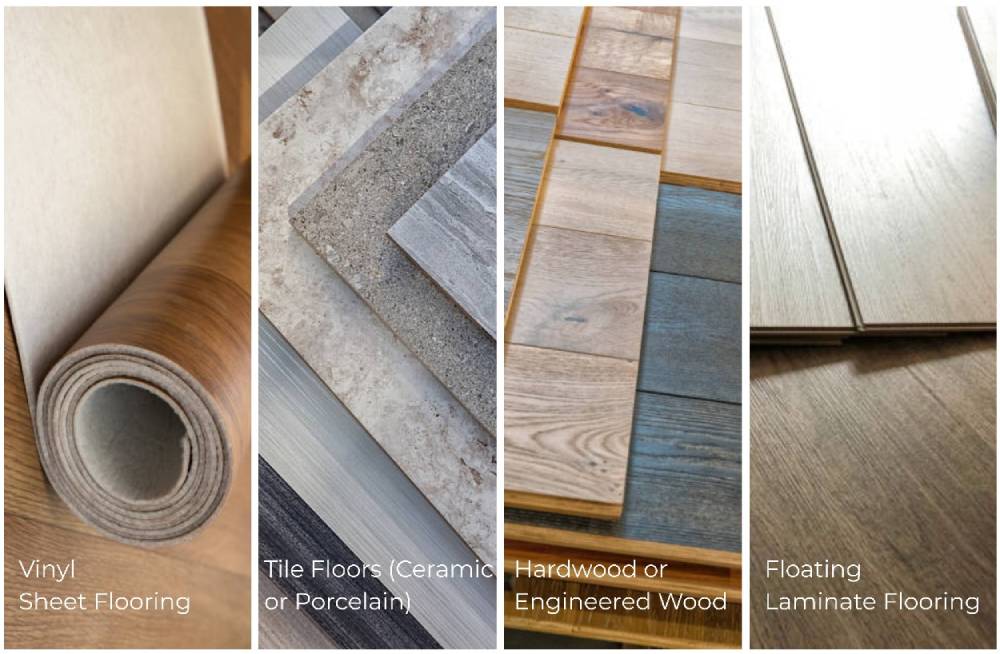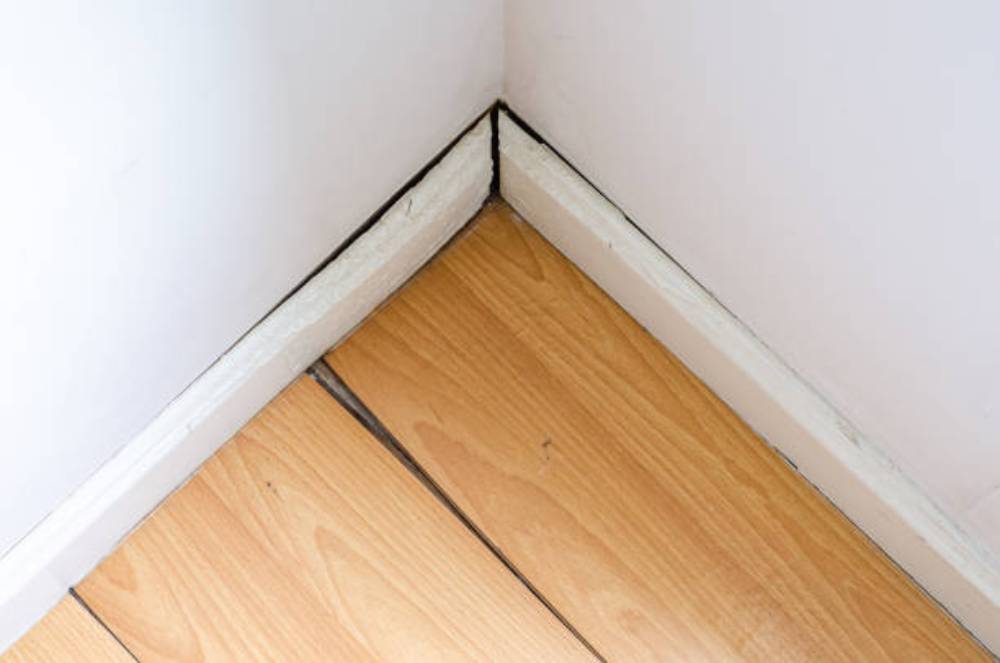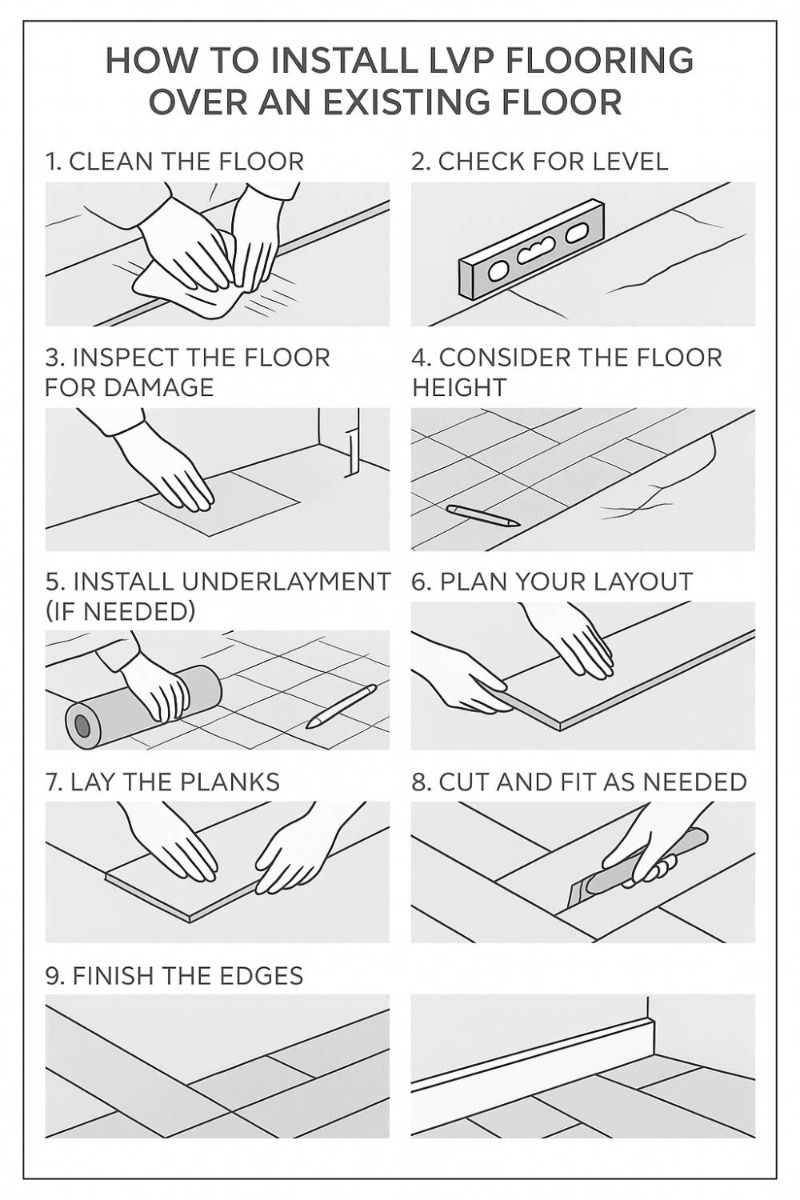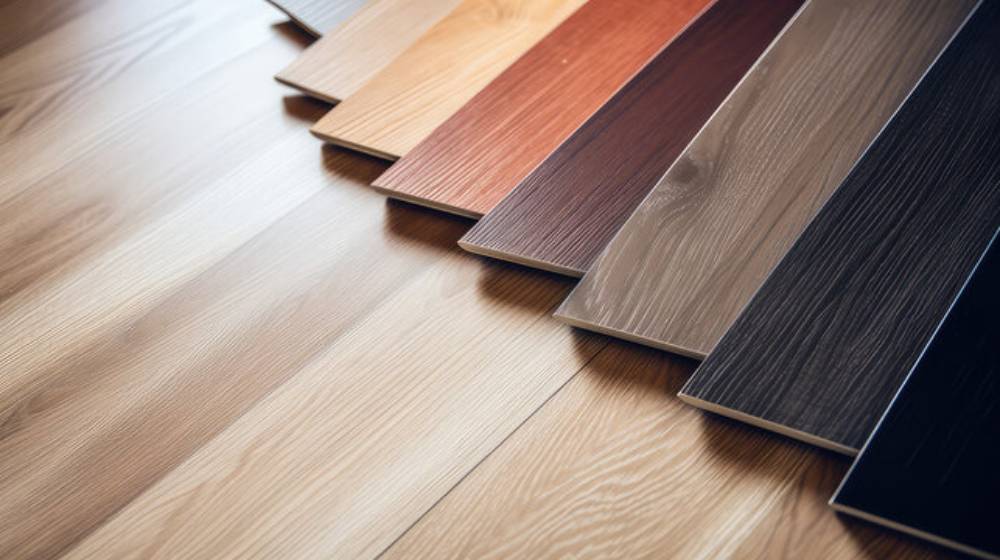
BE THE FIRST TO KNOW
Subscribe to the Porto eCommerce newsletter to receive timely updates from your favorite products.
Want better floors without tearing out what’s already there?
You’re not the only one asking. Many homeowners wonder if installing luxury vinyl flooring over existing floors is a real option. And in most cases, the answer is yes.
If the surface is flat, solid, and in good shape, you can often skip the demolition and go straight into the installation. That means less mess, faster results, and lower costs.
But it depends on the type of flooring you have. Vinyl, tile, hardwood, and laminate all respond differently when you put something new over them.

This guide will walk you through everything you need to know, including:
Let’s get into it.

Not every floor is a good base for luxury vinyl flooring. Before you start, you need to know what kind of flooring you have and whether it's stable enough for a new layer on top.
Here’s a simple breakdown of what usually works and what doesn’t.
If you have one layer of vinyl sheet flooring, and it’s glued down tight with no bubbles or soft spots, you’re in good shape. This is common in older kitchens built in the early 2000s where the vinyl hasn’t lifted.
In this case, you don’t need to remove the old vinyl flooring. Just make sure the surface is clean, flat, and dry before you install your luxury vinyl plank flooring.
You can install vinyl plank flooring over tile, as long as the surface is even.
If the grout lines are deep or uneven, use a floor leveler to smooth things out. This makes sure your planks sit properly without gaps or movement.
Installing over tile floors is a common way to avoid demolition, especially in kitchens and bathrooms.
If your existing wood floor is solid, dry, and not warped, it can work well under LVP. If your boards creak when you walk or you see movement between them, they need to be tightened up first.
Check for squeaky boards or any spots that move. Those should be fixed before you begin the new flooring installation.
This approach works with both hardwood flooring and engineered wood floors.
This is where people often run into problems.
Many people ask, "Can you put vinyl plank flooring on top of vinyl plank flooring?"
That depends, but here’s the twist: a lot of times, what they really have is floating laminate flooring, not vinyl. And that’s a problem.
Floating floors aren’t glued down. They shift with movement and temperature, which makes them a bad base for another floating floor like LVP. If you’re dealing with laminate, it’s better to remove it before installing your new vinyl floor.

Not always.
In many cases, you can install luxury vinyl flooring right over your existing vinyl floor. But only if that surface meets a few important conditions.
You can leave the old vinyl flooring in place if:
If all of that checks out, you’re likely good to go without removing anything.
But sometimes it’s better to tear it out. You should remove the old flooring if:
Installing over a damaged surface can lead to problems. The new vinyl planks might not lock properly, the floor could feel uneven, or the planks could shift over time.
So yes, you can lay vinyl plank flooring over existing vinyl, but only if the base is clean, flat, and stable. Take a few minutes to inspect the area before moving forward.
Even if your existing floor looks decent, don’t skip the prep. Luxury vinyl plank (LVP) needs a clean, flat, and solid surface to go down right and stay down.
Here’s what to check and do before installing.

Start by sweeping and vacuuming. Then scrub the surface to remove any dust, grease, or glue residue.
Vinyl planks won’t bond or click into place properly on a dirty or damp floor. Clean and dry is non-negotiable.
Use a level or a long straight edge to check for dips, humps, or uneven spots.
A wonky subfloor = planks that shift, creak, or separate later.
Look for soft spots, cracks, loose tiles, or signs of water damage. If anything feels spongy or unstable underneath, stop and fix it first. Vinyl may cover imperfections, but it won’t magically make them go away.
Adding LVP on top of tile, hardwood, or old vinyl will raise the floor a bit. That can mess with door swing or make baseboards look off.
Make sure:
Some LVP products come with a built-in pad. Others don’t. Check your product guide.
You’ll need underlayment if:
Before laying a single plank, measure the room and figure out the best plank direction (usually parallel to the longest wall). Avoid tiny cuts on the edges—they look awkward.
Also:
Start along your starting wall (usually the most visible one). Use spacers at the edges to keep that expansion gap.
Depending on your type of LVP:
Work steadily and double-check alignment as you go.
Use a utility knife for straight cuts. For curves, doorways, or corners, grab a jigsaw or laminate cutter. Measure twice, cut once.
Once the planks are all in:
Boom. Done. Floor looks good, feels solid, and won’t give you grief later.
Check your product’s installation guide to see what’s needed for your subfloor. This step might seem minor, but skipping it is one of the most common reasons new floors fail.

There are two common ways to install luxury vinyl flooring: as a floating floor or using a glue-down method.
Both can work over an existing floor, but they come with different pros, cons, and use cases.
A floating LVP system uses planks that lock together and sit on top of the surface without glue. It’s popular for DIY flooring projects because it’s easier to install and doesn’t require adhesives or special tools.
In a glue-down installation, each vinyl plank is attached directly to the subfloor with adhesive. This takes more time and skill, but it creates a stronger bond and more permanent result.
For most homes, especially when installing over existing flooring, a floating vinyl floor is the simpler and more flexible option. But if you're going for long-term durability or working in a busy area, glue-down vinyl flooring might be the better fit.

If you already have a vinyl floor, you have a few good options for adding a new layer. But not every material works well over vinyl. Some flooring types are a great match, others can lead to issues.
Here’s a clear breakdown of what works, what sometimes works, and what to avoid.
If your vinyl floor is clean, level, and secure, you can usually add LVP, LVT, tile, or engineered wood without much trouble. Just make sure to check your product’s install guide before you start your flooring project.
Installing luxury vinyl flooring over an existing surface can save time and effort, but skipping key steps can lead to problems later. Here are the most common mistakes to avoid:
In many cases, yes — installing luxury vinyl flooring over an existing floor without tearing it out. It’s a smart way to upgrade your space faster and with less mess.
But it only works if the floor underneath is solid, flat, and dry. That includes surfaces like tile, vinyl, or hardwood. If the old floor is damaged, uneven, or a floating laminate system, it’s better to remove it first.
What matters most is how well you prep the surface and whether you choose the right type of vinyl plank flooring for your space. Floating LVP works for most homes, but glue-down vinyl is better for high-traffic areas or long-term durability.
If you’re unsure, talk to a pro. A quick inspection can save you from problems down the road. And if everything checks out, you can go ahead and install your new floor without ripping up the old one.
Not always. If the old vinyl is in one layer, glued down, and stable enough, you can install the new luxury vinyl flooring right over it. But if it’s loose, damaged, or layered over another floor, it’s better to take it out first.
Yes, as long as the old vinyl is level, dry, and firmly attached. Check for soft spots or signs of moisture before installing the new vinyl plank flooring.
Only if the old planks are glued down and stable. If the old floor is a floating system, you should remove it. A floating LVP should not go over another floating floor because it can move or shift.
You can install LVP, LVT, engineered wood, or tile over vinyl if the surface is clean and solid. Avoid using carpet or floating laminate over vinyl, especially if the vinyl itself is floating or in poor condition.